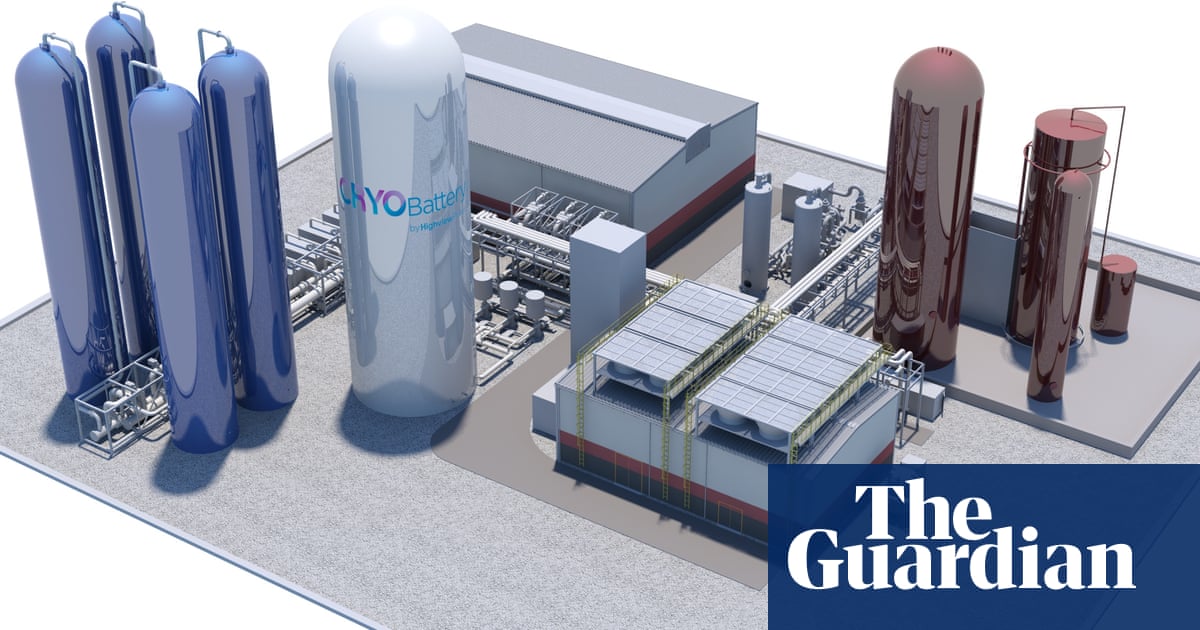
The age-old problem of how to better store power has been brought to the forefront by soaring energy bills.
The UK was left with only enough storage to meet demand for four to five winter days after the Rough gas storage facility in the North Sea closed.
While gas is being phased out, Britain's growing reliance on renewable energy does not solve the problem of intermittency, what happens when the wind does not blow or the sun does not shine.
Storage is the key to making the most of renewable energy. Governments are racing to meet their climate targets and a storage boom is forecast over the next decade.
The International Energy Agency expects global energy storage capacity to increase by more than half by the year 2026, driven by a growing need to create flexible electricity systems which rely more on renewable sources.
According to a report by New Energy Finance, well-established batteries are expected to dominate, but their capacity is measured in hours rather than days. As the winter energy crisis has unfolded, new energy technologies have found renewed favour within the power industry.
Four long-range energy storage options could help keep the lights on in the future.
There isGravity storage.
In the UK, hydropower has acted as a form of energy storage. Electricity is used to pump water upwards into a reservoir when the market has enough power. Water can be released at short notice to create electricity for the grid when electricity supplies are tight.
A new breed of pumped storage could play a bigger role than the giant hydropower plants of the past. Engineers think they could open hundreds of potential sites across the UK, which would be quicker and cheaper to build than traditional hydropower dams. By using a mineral-rich fluid, which has more than two-and-a-half times the density of water, projects could generate the same amount of electricity from slopes which are less than half as high.
The most-used battery technology can store electricity for less than four hours, but pumped hydropower can usually be stored for up to 175 hours. India dominates the expansion of pumped hydropower storage thanks to projects using its existing large reservoirs, according to a report by the Paris-based agency.
Another form of mechanical energy storage that could play a greater role in the future is using electric winches to hoist 12,000-tonne weights to the top of a mine shaft, then dropping them down to the ground, to create electricity. These innovative storage projects are unlikely to replace the UK's need for batteries, but they could help the country meet its climate targets at a lower cost.
The solar power storage is concentrated.
The Crescent Dunes solar energy project is 190 miles north-west of Las Vegas. The Observer has a photograph of Pedro Alvarez.
Engineers in the US are working on new technology that will store energy from renewable sources as heat. The Crescent Dunes project uses the heat of a vast solar farm, concentrated using mirrors, to heat molten salt to temperatures of up to 560C. The salt is able to keep the temperature constant. The heat is used to run a steam turbine which can generate enough electricity to power 75,000 homes.
China is expected to lead the expansion of concentrated solar power storage thanks to a generous subsidy scheme. The second-largest volume of new capacity is expected to be rolled out by the United Arab Emirates. Similar projects are emerging across Australia.
According to the IEA, solar power can be stored for up to 15 hours. Unlike batteries, which have a finite number of charge/discharge cycles, molten Silicon can be used indefinitely and can be recycled at the end of their service life.
Green hydrogen.
A hydrogen car is being re-Fueled. Sunpix Environment/Alamy
Governments plan to replace fossil fuels with clean-burning, green alternatives in the decades to come, and that will lead to a boom in demand for hydrogen made from water and renewable energy. Green hydrogen can be used as an energy storage form.
When the wind is blowing but the grid is oversupplied with renewable energy, you can store energy in a battery for about an hour. You need something new if you want to store energy for a long time.
In the past, the UK's electricity system operator has had to pay renewable energy developers to switch off their wind turbine or solar farms to avoid overloading the grid with green electricity when power supplies outstrip demand. Using sunny weekends and windy nights to create green hydrogen could help countries make better use of their wind and solar farms.
The cost of producing green hydrogen has come down dramatically in line with the falling cost of renewable energy, which is a reason why ITM Power faces growing demand for its electrolysers. He said that it helps that more energy companies are interested in avoiding the record market price for fossil fuel gas.
Cryogenic batteries.
One of the world's biggest liquid air, or "cryogenic" batteries, will begin operating near Manchester in the UK in the coming months after developers promised it could help store renewable energy for weeks rather than hours.
Highview Power is developing the project. It plans to use renewable electricity to chill air to -196C and turn it into a liquid that could be stored for weeks. When needed, the liquid can be turned back into gas and used to generate electricity for up to 200,000 homes.
The success of a 5 watt project built next to a landfill site in Greater Manchester has led to the construction of a 50 wattcryo battery.
Highview has plans to build batteries in the US and Chile, and earlier this year set out plans to develop seven new liquid-air projects in Spain at a cost of about $1 billion. The UK project will be the first of its kind.